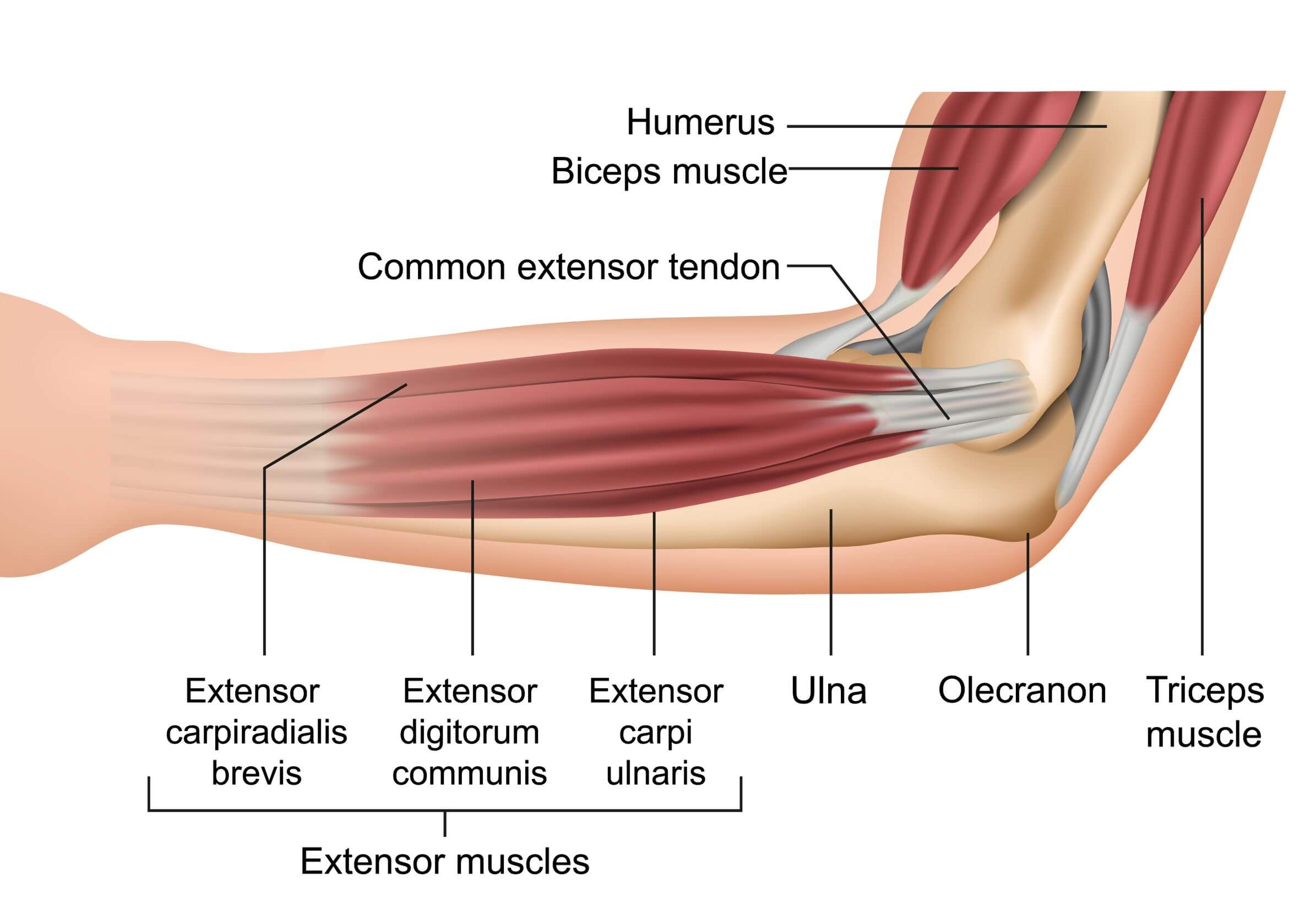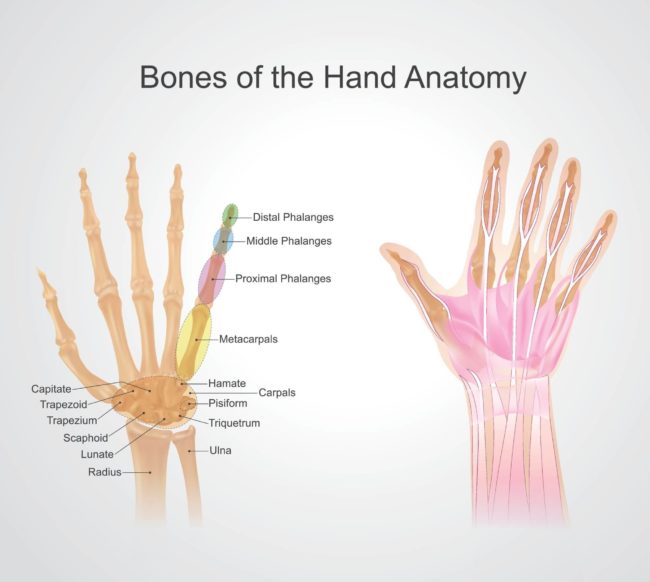Unless you’re walking through a science lab, you really can’t see bones with your own eyes. Bones are literally from head to toe in every human being, yet most of us don’t know much more about them than what we see on a Halloween costume. In that sense, is it any wonder that there are as many myths about bones as there are bones in the human body? (That number is 206, by the way.)
It’s not that we have a bone to pick, necessarily. But we do feel it’s important to clear up a few facts about bones – especially in regard to the hand, wrist, and elbow – in order to arm our patients with relevant information.
Let’s start with these:
1. No bones about it: There’s nothing funny about a funny bone.
Have you ever fallen on your elbow? Chances are, you didn’t laugh. That really hurts!
But it hurts in an unusual way, causing a “funny” sensation you don’t normally feel. That’s one reason why it’s called a funny bone.
The second reason is a bit punnier. That sensation you feel is actually caused by the ulnar nerve in your elbow rubbing against the humerus bone, which extends from your elbow to your shoulder. Humerus … funny. Get it?

2. The phrase ‘dry as a bone’ is hogwash.
Bones are actually soft and slightly flexible. In fact, more than 30 percent of healthy bones is water, and blood runs through them. They also contain a soft tissue called bone marrow, as well as calcium, phosphorus, sodium, and collagen. Dead bones do become dry and brittle, however.
3. All bones are not created equal.
In essence, they might look the same, but some are stronger than others. In fact, the femur, or thighbone, is the strongest, and a bone in the ear known as the stapes is among the most fragile.
4. Bones are not all the same color.
Bones are not truly white, at least not all of them. The colors can vary, such as off-white, beige, and light brown.
5. You know your hands are bony, but they’re probably even bonier than you think.
About 25 percent of the bones in the human body is in your two hands. Each hand has the following 27 bones:

- 8 carpal bones, essentially found in the wrist area
- 5 metacarpal bones at the palm area
- 14 phalanges (finger bones) that are connected by joints and ligaments

6. There is hope after osteoporosis.
Many people believe that once you get osteoporosis, there’s no going back. But there are options. Certain exercises can strengthen bone, and hormone therapy may allow your body to rebuild bone.
7. Bones can’t grow back.
Bones can heal and repair themselves, such as in the case of fractures. However, if you completely lose a bone, it won’t grow back.
This article barely strikes the surface regarding facts about bones and common myths. For more of the bare bones on this topic, visit our website and explore our educational posts.













